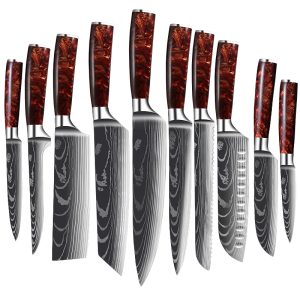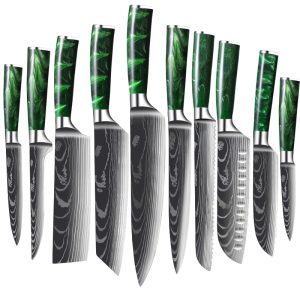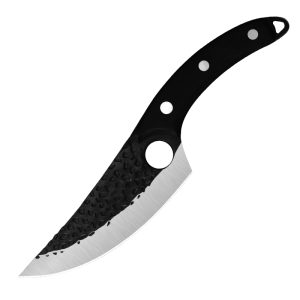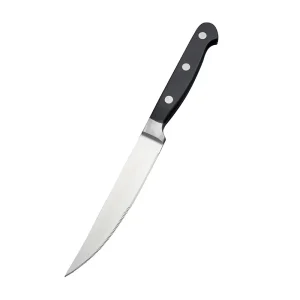Kitchen Knife Manufacturers
Make your brand with Pro supplier!
1.Professional design and development team
2.Low MOQ for customizing LOGO (Blade/Box)
3.ODM/OEM project
Home > kitchen knives
Find The Right Kitchen Knife Solution
Kitchen knives are essential tools in the kitchen. They are classified in various ways. According to the manufacturing process and materials used, the process is divided into Stamped Knives, Forged Knife, Full-Tang Knives. The materials are divided into Stainless Steel, Carbon Steel, High Carbon Stainless Steel. The common functional classifications include chef’s knife, cleaver knife, kiritsuke knife, santoku knife, nakiri knife, bread knife, slicing knife, boning knife, steak knife, utility knife, paring knife, carving knife, etc.
High-quality knives are mainly distinguished by craftsmanship, sharpness and material. The shape and center of gravity of the knife will affect the grip of the knife. The sharpness of the knife will affect the taste of food. The sharpness and durability of the knife are determined by the material. If you want to choose a suitable kitchen knife, you should read “How to choose a kitchen knife?”
Damascus Steel Knife
A Damascus knives, also known as a Damascus steel knives, is a type of knife renowned for its distinctive patterning on the blade. Here are some key characteristics and aspects of Damascus knives:
Blade Material: Damascus knives are typically made from Damascus steel, which is a type of steel known for its strength, sharpness, and ability to hold an edge. Traditional Damascus steel was historically produced in the Middle East and South Asia, using a forging technique that involved folding and layering different types of steel together. Modern Damascus steel often replicates this patterning using layered alloys.
Pattern: One of the defining features of a Damascus knife is its unique pattern on the blade, often resembling flowing water or wood grain. This pattern is created through the layering and folding process during forging, where different metals are repeatedly folded together.
Strength and Durability: Damascus steel is known for its toughness and resistance to shattering, making Damascus knives durable and reliable for various cutting tasks.
Sharpness and Edge Retention: Damascus knives are prized for their sharpness and ability to maintain an edge, making them suitable for precise cutting and slicing.
Aesthetics: Beyond their functional qualities, Damascus knives are also valued for their aesthetic appeal. The distinct pattern on the blade makes each knife unique and visually striking.
Types of Damascus Knives: Damascus steel can be crafted into various types of knives, including chef’s knives, utility knives, cleaver knife, slaughter knife, gyuto knife, kiritsuke knife,santoku knife, nakiri knife, bread knife, slicing knife, boning knife, steak knife, paring knife, hunting knives, and folding knives.
Forged Knife
A forged knife is a type of kitchen knife that is made by heating a single piece of steel to a high temperature and then hammering and shaping it into a blade. This process compresses the steel, resulting in a strong and durable blade that is difficult to break or bend.
Forged knives are known for their high quality, balance, and durability. They are typically made with a full tang, meaning that the blade runs the full length of the handle, providing added strength and balance. The bolster, or thick junction of the blade and handle, also provides added weight and balance to the knife.
Stainless Steel Knife
A stainless steel knife is a type of kitchen knife that is made from stainless steel, a popular material used in the manufacturing of knives due to its corrosion resistance, durability, and ease of maintenance.
Stainless steel knives are known for their ability to resist rust and staining, making them ideal for daily kitchen use. They are relatively easy to clean and maintain compared to carbon steel knives, as they are less prone to discoloration and require less maintenance to keep them looking new.
Stainless steel knives come in various grades and compositions, each offering different levels of hardness, edge retention, and resistance to wear. Some common types of stainless steel used in knife making include 440 stainless steel, VG-10 stainless steel, and AUS-8 stainless steel, among others.
Stainless steel knives are versatile and can be used for a wide range of kitchen tasks, such as chopping, slicing, and dicing. They are widely available and come in different styles and designs to suit different preferences and needs.
What Type Of Knife Are You Looking For?
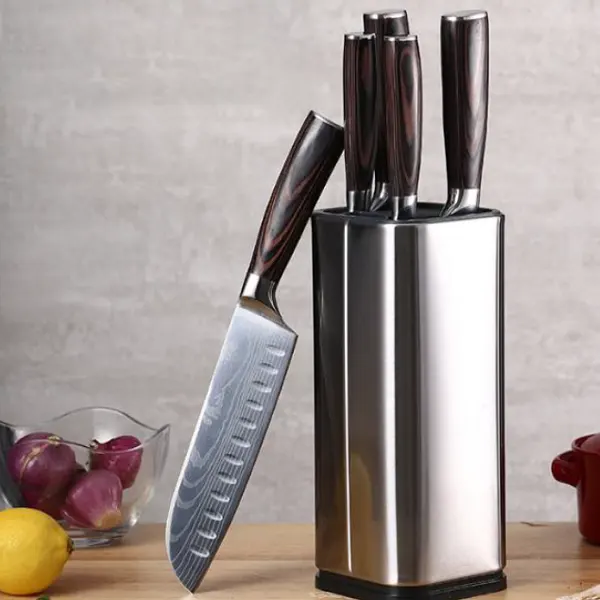
Knife Blocks
Used to store and organize all kinds of kitchen knives.
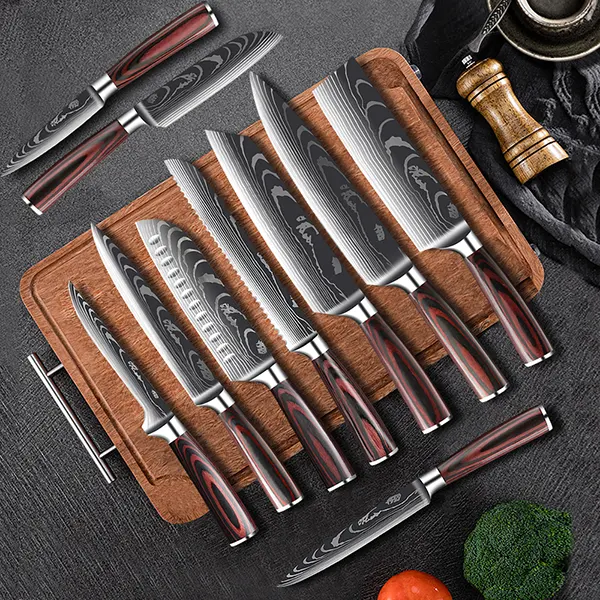
Knife Set
A bundled knife set for basic kitchen tasks.
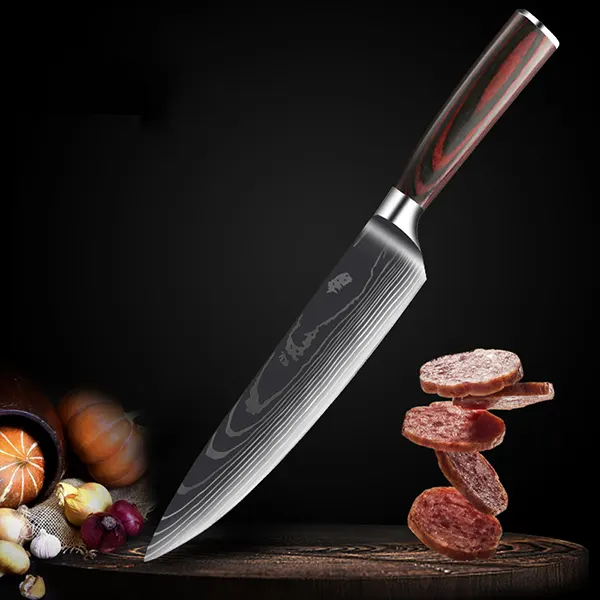
Chef's Knife
A kitchen workhorse for chopping, mincing, dicing and slicing.

Carving Knives
A long, thin blade used for cutting large pieces of meat, poultry, and fish.
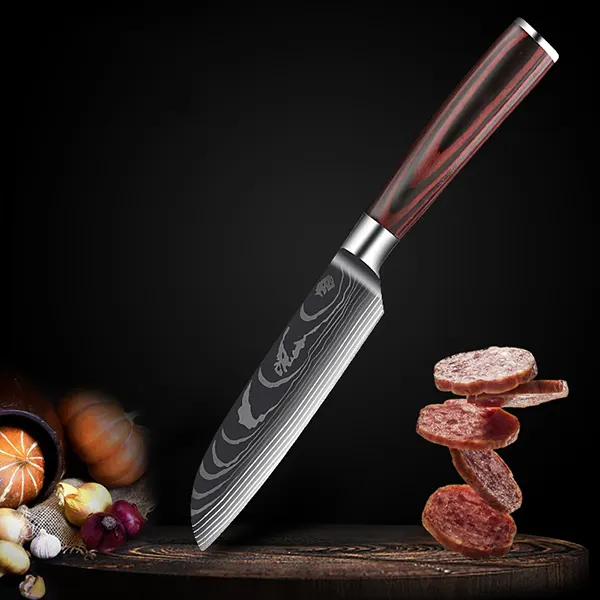
Santoku Knives/Japanse Knives
The Santoku knife was invented by the Japanese. This knife can be used to cut meat and fish, and can also easily cook vegetables.
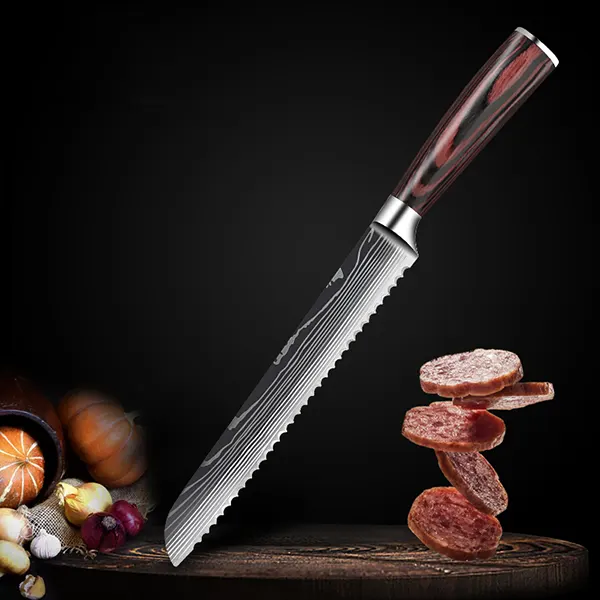
Bread Knives
Serrated knives for cleanly slicing bread or other foods that are hard on the outside but soft on the inside.
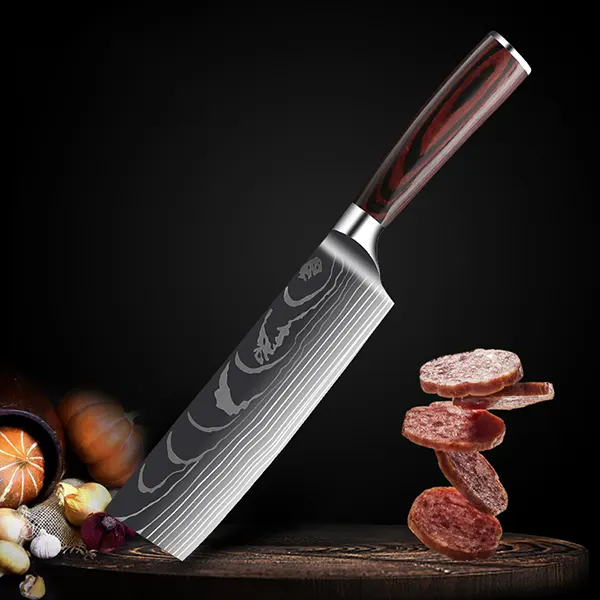
Cleavers Knives
Used to cut large pieces of meat and cut through bones.
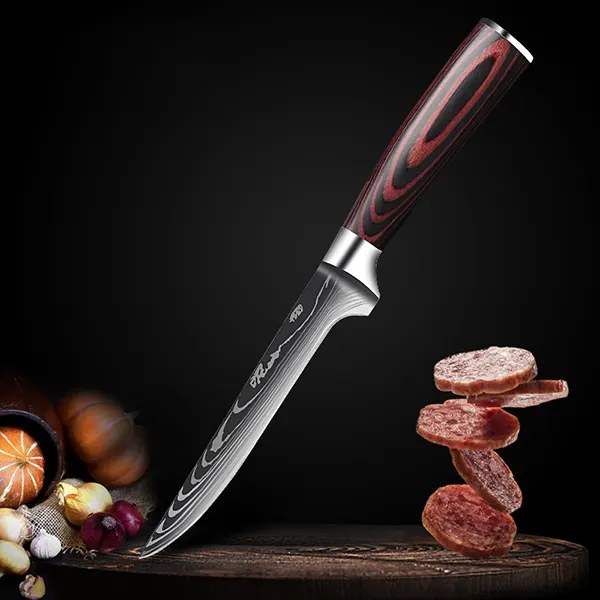
Boning Knives
A long, thin blade with a sharp tip, designed for separating meat and fish from bones.
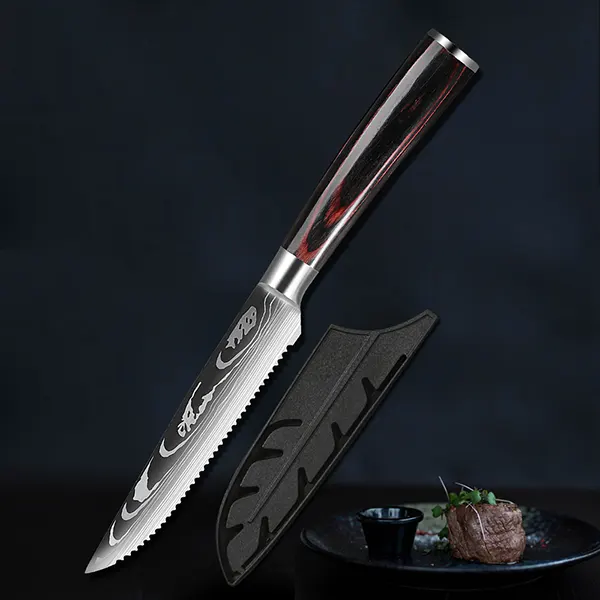
Steak knife Sets
Makes it easy to cut steaks at the table. Available individually or as a set.
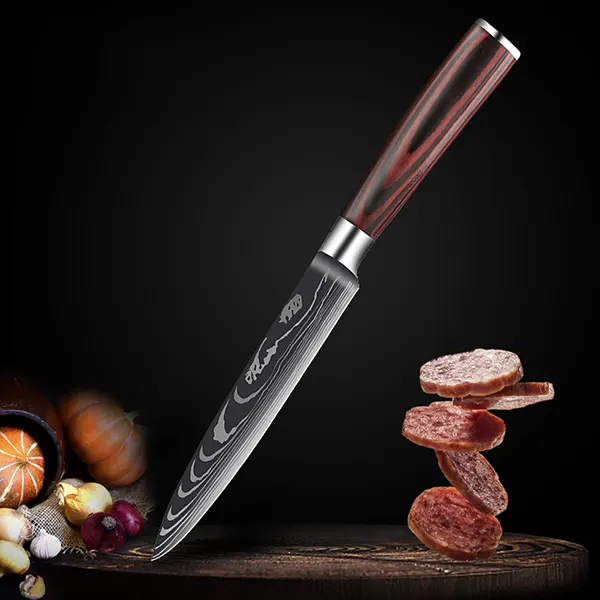
Utility Knives
Perfect for everyday slicing, dicing and chopping.
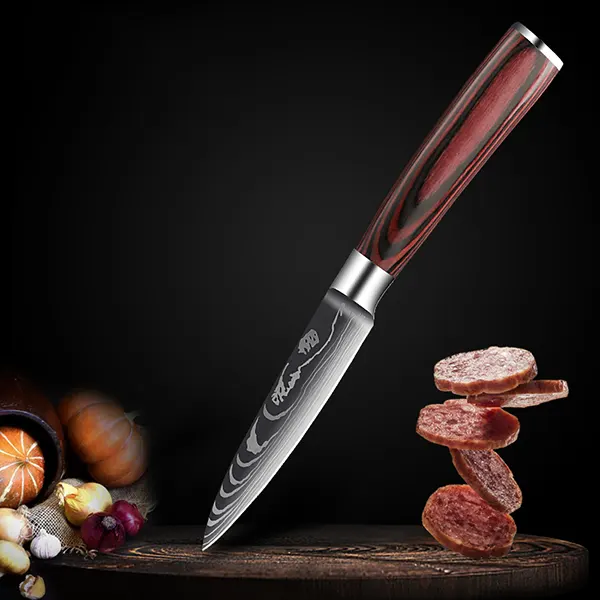
Vegetable Knives
Small knife for fine cutting work.
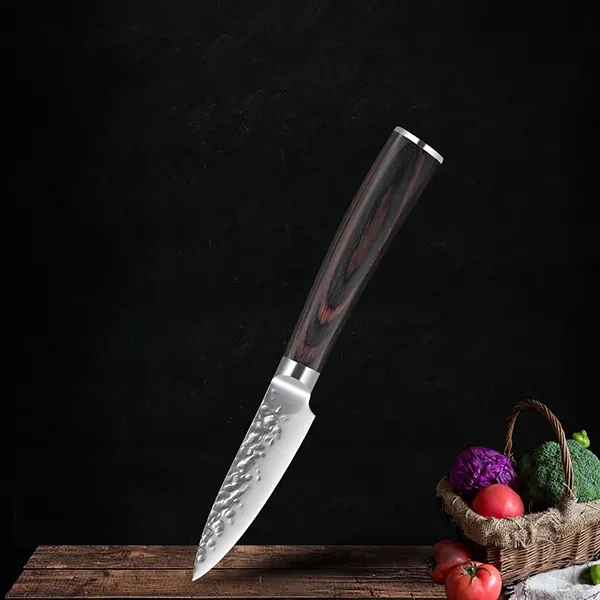
Paring Knives
Use for cleaning, peeling, slicing and other delicate tasks.
Customized Kitchen Knife for Your Brand
Changwen offers custom knife services with hundreds of options to choose from. We can provide you with traditional, modern, unique or highly decorative knives. Made of high-quality steel, we create beautiful knives for you.
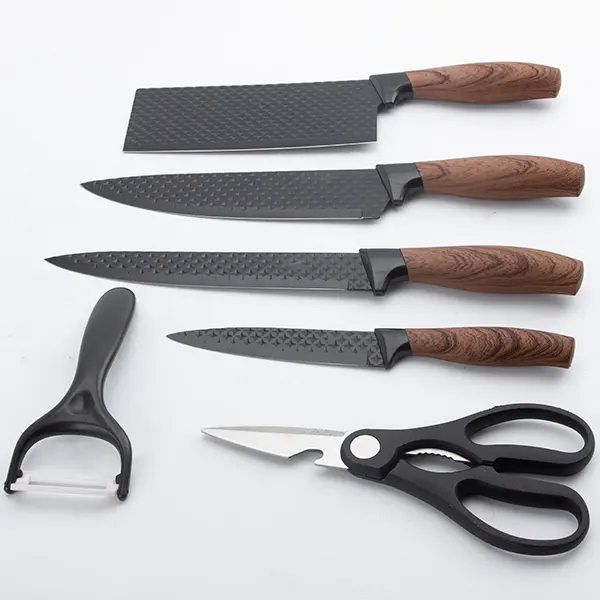
Choose Knife Type
Choose any tool type, as a set or individually.
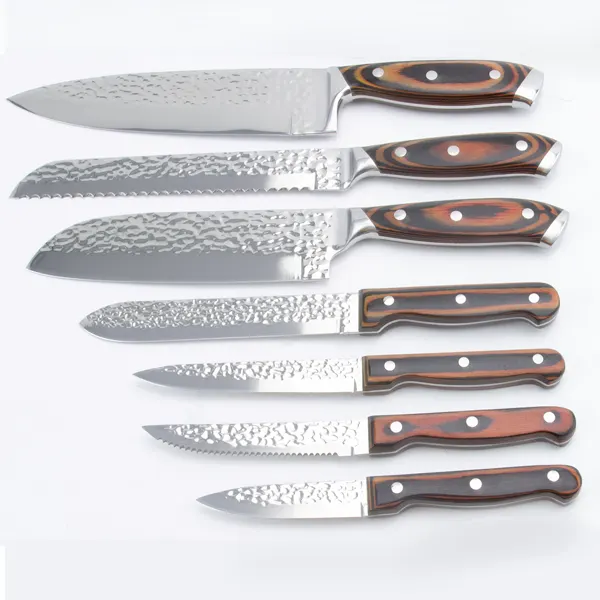
Choose Blade
Choose the shape, angle, thickness, material, pattern, coating you require.
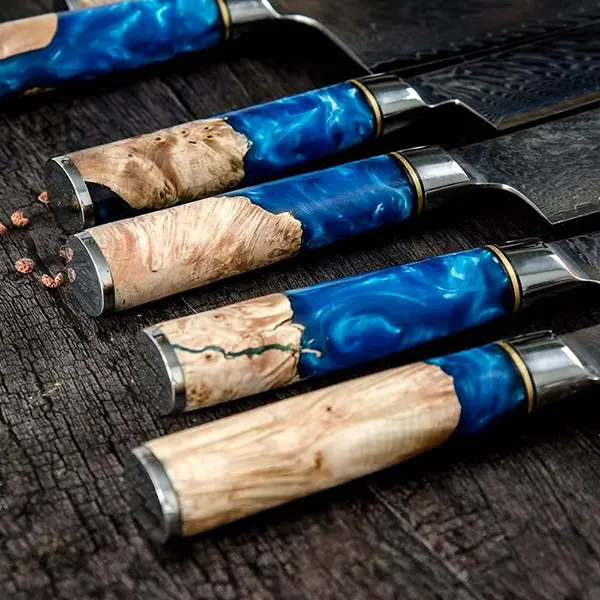
Choose Knife Handle
Choose the handle shape, material, and pattern you require.
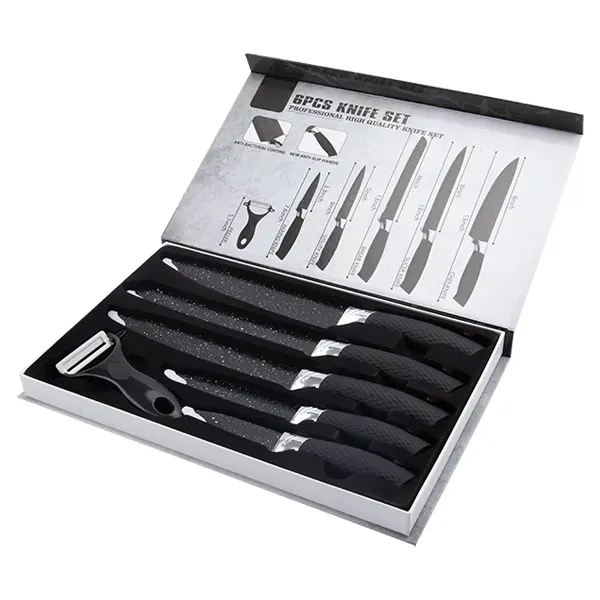
Choose Packaging
Choose a knife blocks and packaging Box.
Kitchen Knife FAQ
Chef’s Knife: Versatile and used for chopping, slicing, and dicing.
Paring Knife: Small and precise, ideal for peeling and intricate cutting.
Bread Knife: Serrated edge for slicing bread without crushing it.
Santoku Knife: Similar to a chef’s knife but with a different shape; great for chopping and slicing.
Utility Knife: Mid-sized and good for tasks too large for a paring knife but too small for a chef’s knife.
Stainless Steel: Durable, resistant to rust and stains, and easy to maintain.
Carbon Steel: Sharp and easy to sharpen but prone to rust and staining.
High Carbon Stainless Steel: Combines the best features of both stainless and carbon steel.
Ceramic: Extremely sharp and lightweight but can chip or break if dropped.
Honing Rod: Used regularly to maintain the edge.
Sharpening Stone (Whetstone): Provides a precise edge but requires skill to use properly.
Electric Sharpener: Convenient and fast, but can wear down the blade over time.
Professional Sharpening: Having knives professionally sharpened once or twice a year ensures optimal performance.
Hand Wash: Avoid dishwashers as they can dull and damage knives.
Dry Immediately: Prevent rust and water spots by drying knives right after washing.
Store Safely: Use a knife block, magnetic strip, or knife guard to protect the blade and prevent accidents.
Regular Honing: Maintain the edge between sharpening sessions.
Stamped Knife: Cut from a large sheet of steel and typically lighter and less expensive.
Forged Knife: Made from a single piece of steel, heated and shaped, often heavier and more durable.
Chef’s Knife: Best for most chopping and slicing tasks.
Paring Knife: Ideal for small, precise cuts.
Bread Knife: Perfect for slicing bread and other baked goods.
Boning Knife: Designed for deboning meat and fish.
Carving Knife: Long and thin, great for slicing meat.
Full Tang: The blade extends through the entire handle, providing better balance and durability.
Partial Tang: The blade extends partially into the handle, often found in less expensive knives.
Cut on Stable Surfaces: Use a cutting board to prevent slipping.
Keep Knives Sharp: Dull knives require more force and are more likely to slip.
Use the Right Knife: Select the appropriate knife for the task to avoid accidents.
Store Properly: Store knives safely to prevent injuries when reaching for them.
Granton Edge: Features indentations along the blade, reducing friction and preventing food from sticking.
Benefits: Makes slicing smoother and easier, particularly for meats and cheeses.
Paper Test: Try slicing through a piece of paper; a sharp knife will cut cleanly.
Tomato Test: A sharp knife will easily slice through the skin of a tomato without squishing it.
Shave Test: Carefully see if the knife can shave off a thin layer from a vegetable, like a carrot.
The most common types of kitchen knives include the chef’s knife, paring knife, serrated bread knife, utility knife, and santoku knife.
Kitchen knives should ideally be stored in a knife block, on a magnetic knife strip, or in a designated drawer insert that provides individual slots for each knife. This helps in protecting the blades from damage and also ensures safety in the kitchen.
Get a product catalog?
WE’RE HERE TO HELP. 24 HOURS A DAY, 7 DAYS A WEEK.


